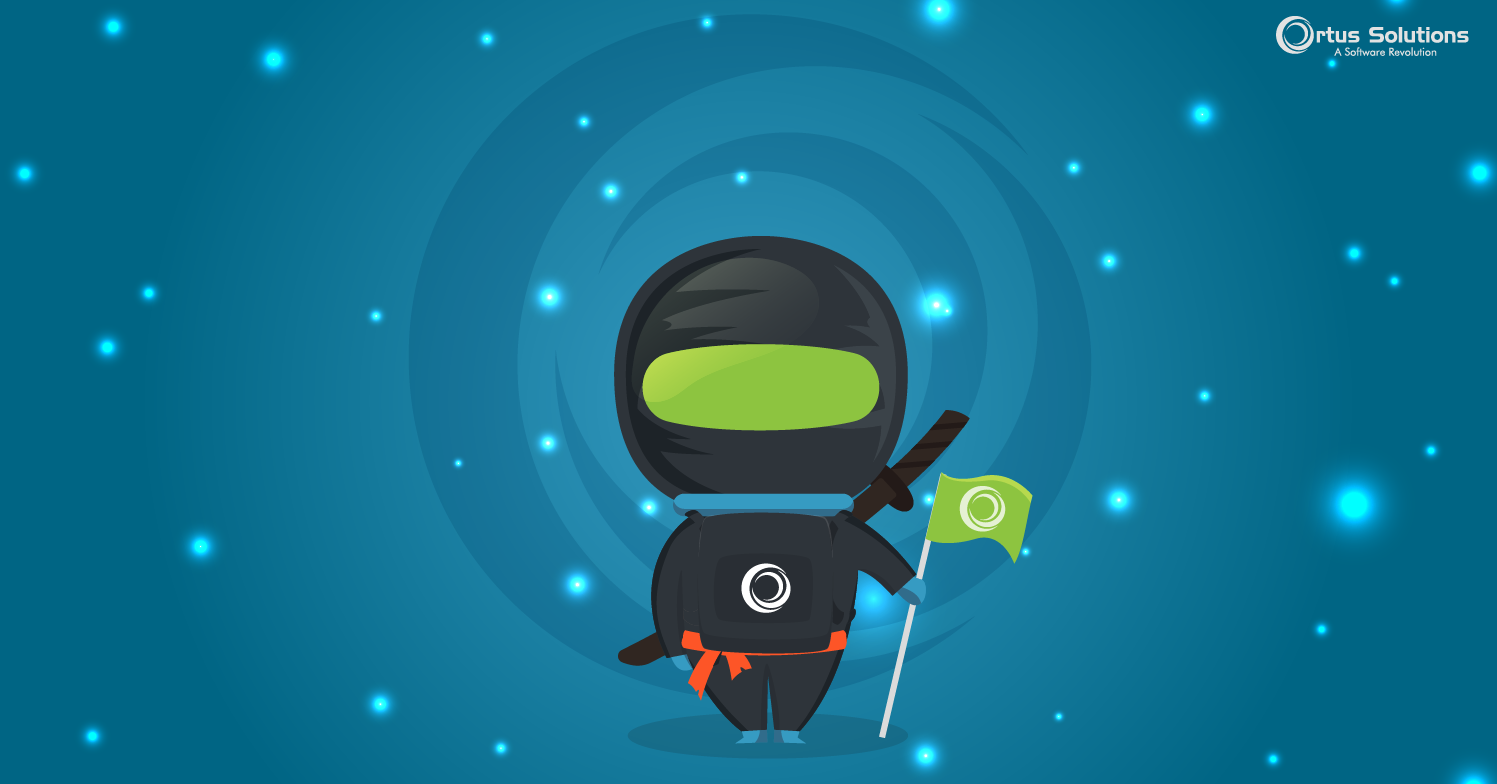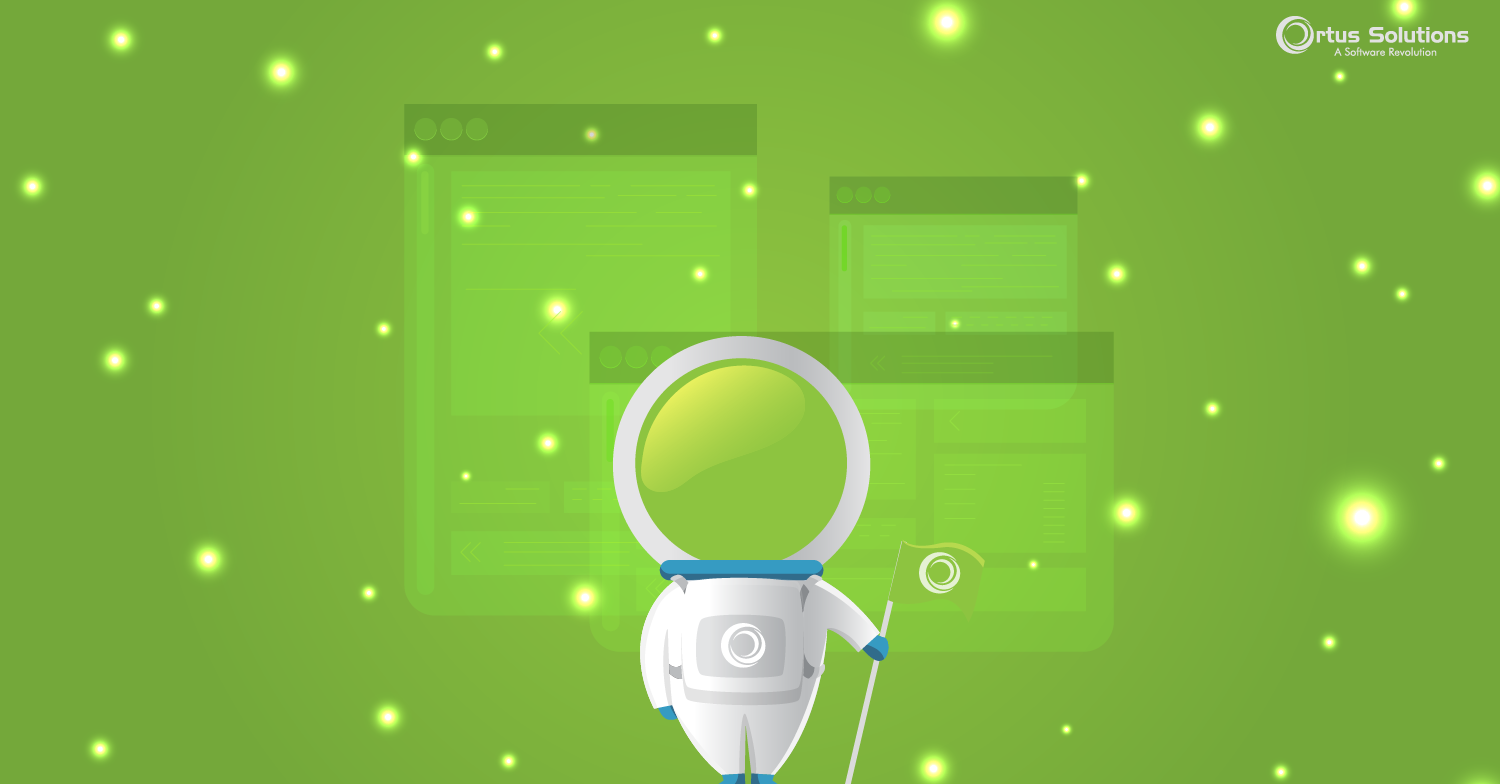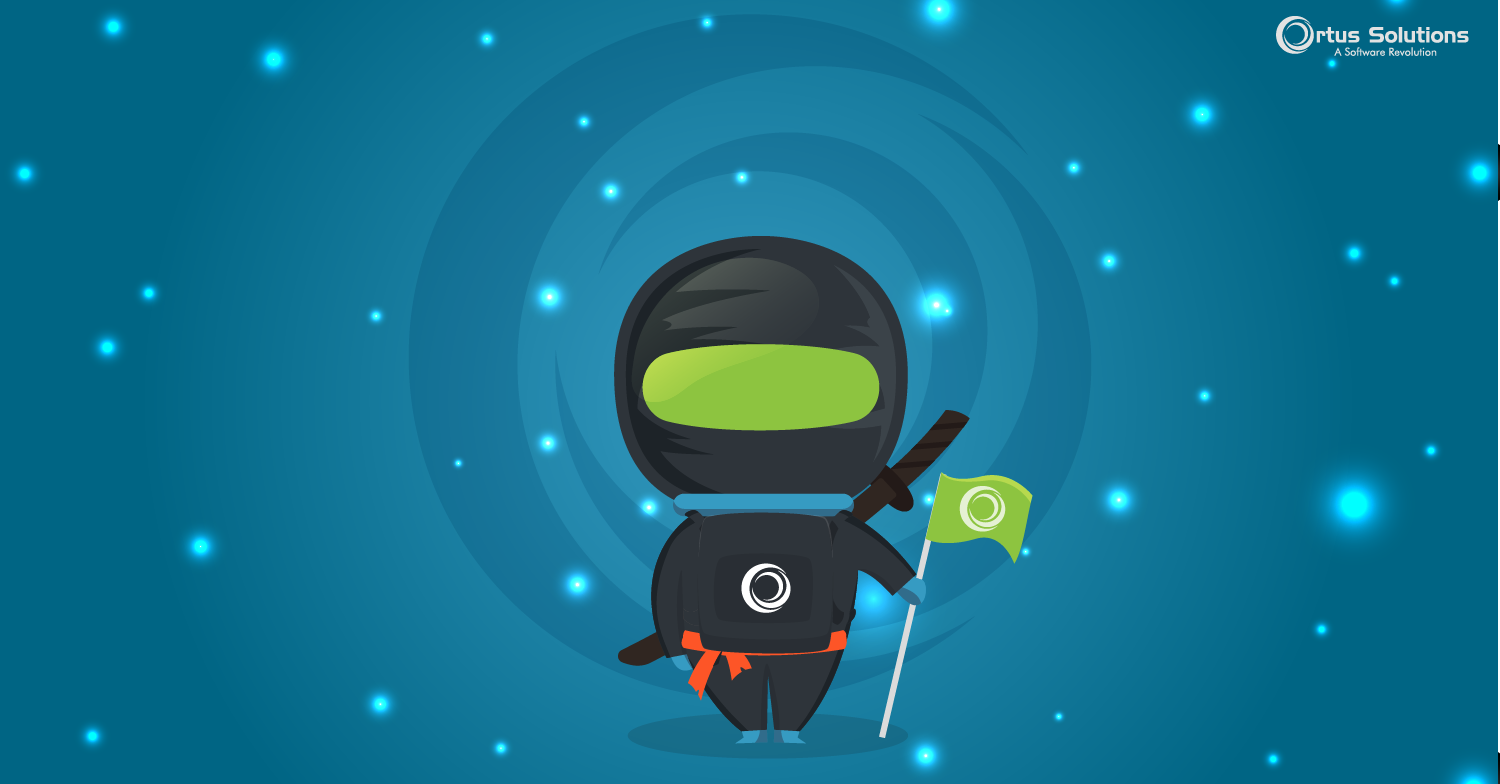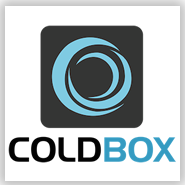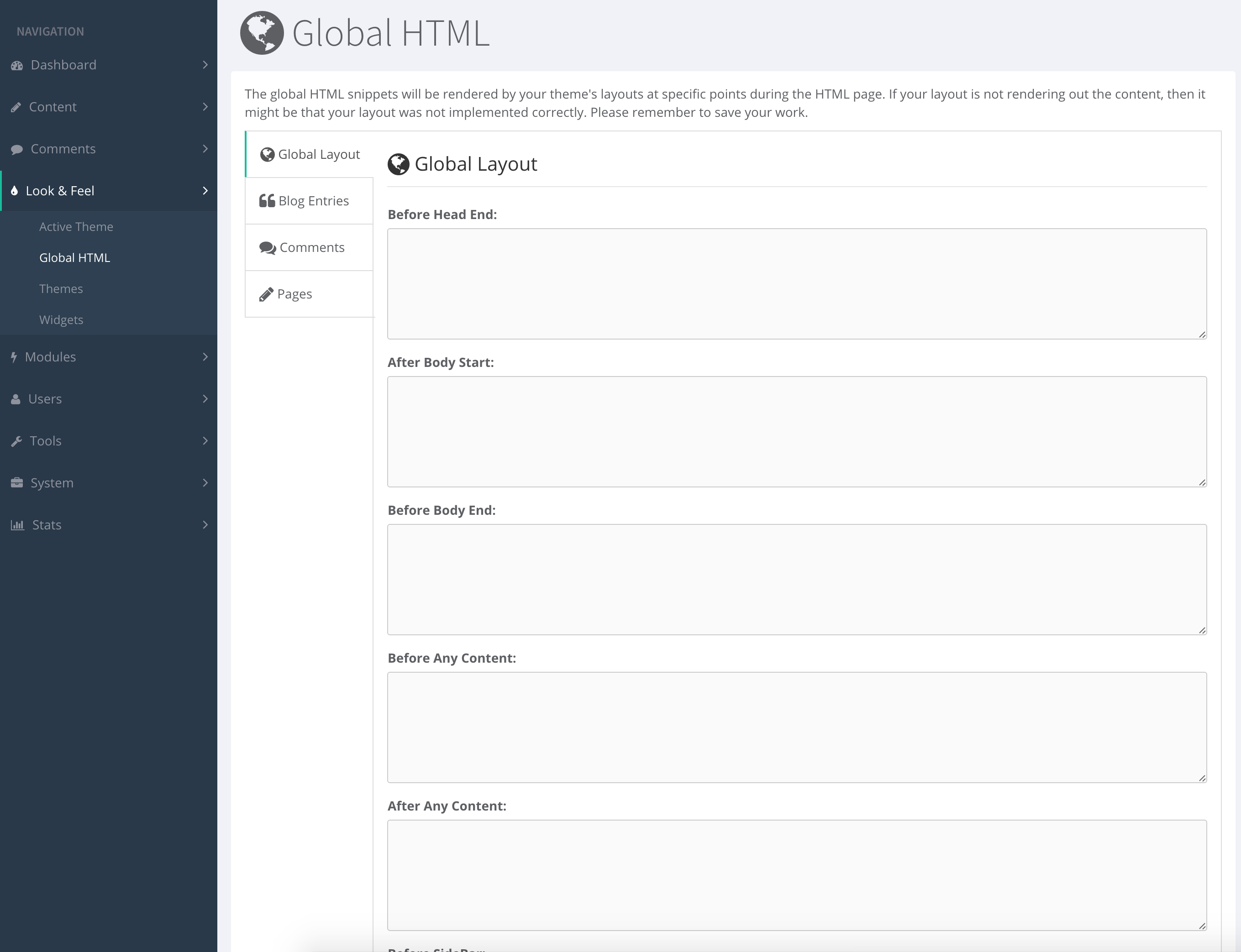
ContentBox has what we call, a Global HTML manager. This manager allows you to seamlessly drop in JavaScript/CSS/HTML to specific theme and UI presentation life-cycle events.
Purpose
The purpose of the Global HTML manager is to allow the integration of third-party scripts, CSS or HTML integrations easily without altering code or programming it in the theme. This allows for cross-theme output in a manageable manager.


